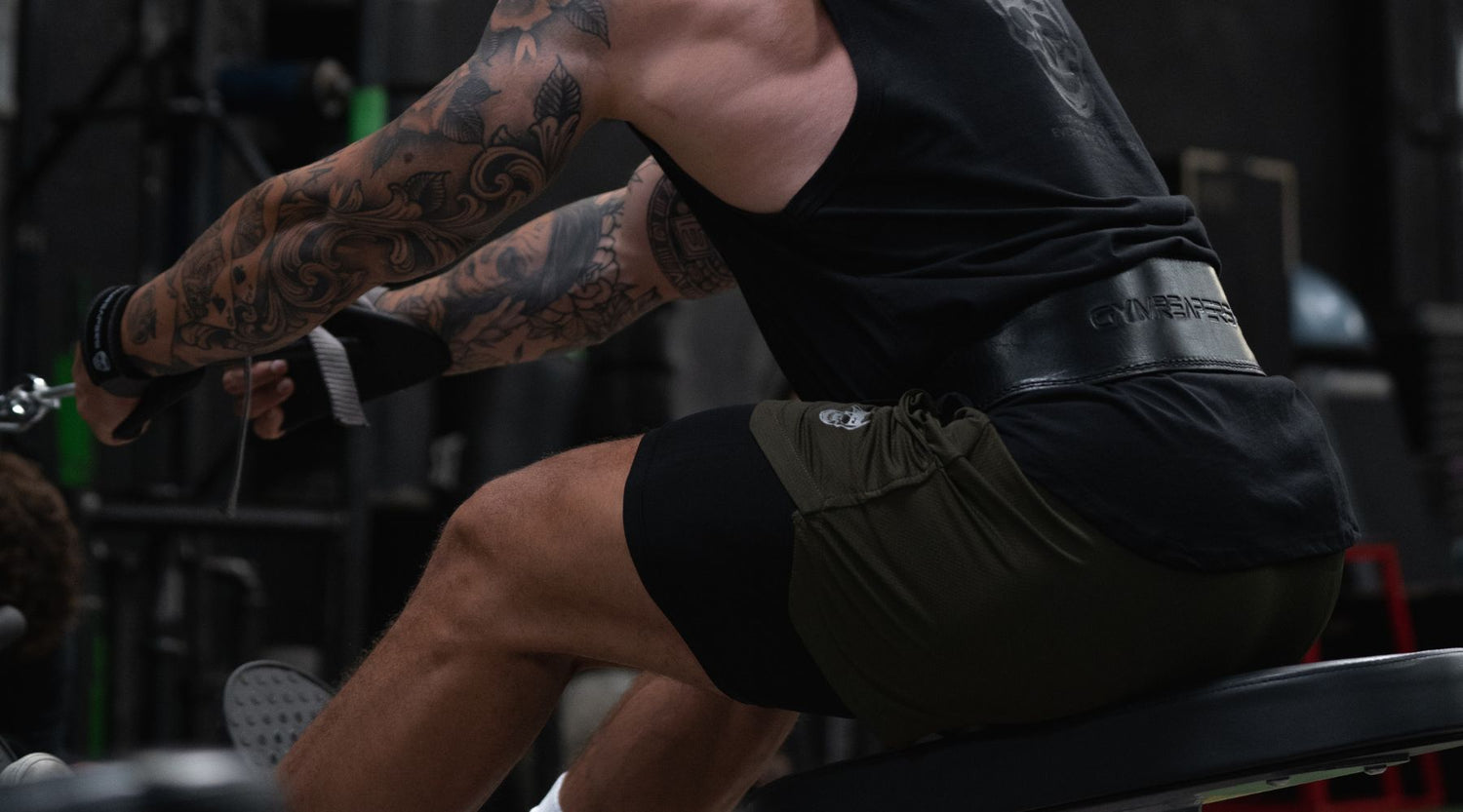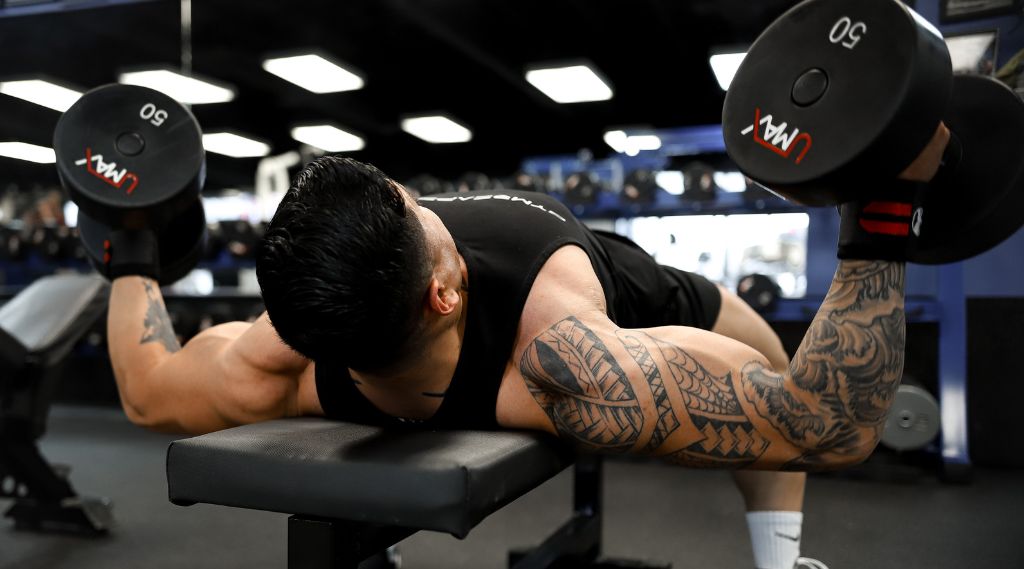Throwing on a lifting belt won’t protect you 100% from back pain, but it can definitely help you if you use proper form and breathing techniques.
A lifting belt can help your back if you are looking for more support and rigidity when lifting weights with a healthy back, however, it should NOT be used as a solution to a back injury. Belts help to increase intra-abdominal pressure and muscle activation of the core, which can improve injury prevention under heavier loads.
But, if you think that a lifting belt can fix poor technique (i.e. lifting with a round back), that is simply not the case.
Below, I will cover 5 ways a lifting belt can help your back, and explain how to use a lifting belt properly to increase the protection of your back.
5 Ways That Lifting Belts Help Your Back

Increases Muscle Activity in the Lower Back
Lifting belts have been shown to increase the muscle activity of the erectors (lower back muscles) during lifting, which can help decrease lower back injury and improve rigidity in the torso.
Injury can happen when the muscles of the lower back and core are not properly engaged, which can result in trunk flexion (rounding), extension, or lateral bending of the torso and spine under load.
A lifting belt will help you tap into the strength of the lower back muscle fibers more effectively (mostly due to the next point).
Generate More Intra-Abdominal Pressure (IAP)
Research has shown that lifting belts enables lifters to produce higher levels of intra-abdominal pressure (IAP), which is the amount of force and pressure your core can produce.
When preparing for an exercise, you should take a big breath and fill the abdominal cavity with air.
In doing so, you draw air into the diaphragm and torso, increasing the pressure within the regions, which increases support throughout the entire core.
Wearing a belt only increases that amount of pressure, as the purpose of the belt is to allow you to push your abdominals and torso out against the belt material.
Higher IAP levels can produce more spinal stability, increased core strength, and can ultimately decrease the risk of injury to the spine under heavier loads.
Decreases Compressive Forces on the Spine

Research has shown that due to lifters being able to increase IAP development, they found that wearing belts decreased the amount of compressive forces placed on the spine.
Compressive forces on the spine can result in injuries to the disc that is between the vertebrae and can create varying levels of discomfort and pain.
In this study, a stiff lifting belt reduced compressive forces of the spine by an average of 10%. However, it’s important to note that the belt alone did not decrease compressive forces.
The use of the belt had to be combined with proper lifting technique, i.e. inhaling prior to initiating the lift and engaging the core muscles against the belt.
This could be helpful for lifters who want to protect themselves when training regularly or for lifters who have had injuries in the past and have been cleared to work out again.
Note: If you suspect you have a lower back injury, we recommend seeking medical attention, as throwing on a belt will not improve an already injured back.
Helps Cue You To Keep Back in Correct Position
Wearing a lifting belt provides you with immediate external feedback on whether you are actively creating tension in your core during a lift.
The belt acts as a tool to help you feel the abdominals, obliques, and lower back all being contracted (bracing) to create tension in the belt.
By adding a belt, lifters are able to understand what coaches mean when they say “take a big breath” or “tighten your core”.
All those cues can help, but sometimes lifters need an external tool to also help those cues sink in to ultimately reap the benefits of a lifting belt.
Can Boost Confidence and Performance
Wearing a lifting belt can create a false sense of security for untrained lifters or lifters who neglect form, however, research has shown that those who wore a belt generally felt more confident in their ability to stabilize their core.
This can be a helpful thing as some lifters get nervous under heavier loads, and lack the confidence to nail the lift.
When this happens, they often don't fully contract their core with confidence, which can result in injury (even though they have the capacity to lift the weight safely).
This confidence to stabilize their core better also could result in them being able to perform a few more repetitions or train harder (and still be safe doing it), which could significantly impact their strength, muscle gain, and overall success in the gym.
How To Use A Lifting Belt To Help Your Back

When you want to help your back, wearing a lifting belt can be one part of the overall approach.
First, you need to make sure that the movements you are doing are not causing stress to the lower back or spine in a way that creates pain or worsens discomfort.
Many exercises that cause issues can be swapped out for others that train the same muscle groups yet limit the stress to the back (for example replacing a back squat for a hack squat).
Next, you will want to wear a lifting belt when you are performing heavier loads (80% of your 1RM or higher) or when you are training in the 5-15 range and training hard close to failure.
You will want to place the belt around your waist and breathe into it.
Here is a full article on when and how to properly wear your lifting belt.
Does A Lifting Belt Make Your Back Stronger?
A lifting belt enables you to realize the strength of your lower back, but it does not make it stronger.
A lifting belt increases the stability and rigidity of the torso, which in turn allows a lifter to generate more force to increase strength.
By wearing a belt, you are simply creating a better environment for your back to showcase its strength (but you are not artificially adding strength to it).
Does A Lifting Belt Help With Back Pain?

Yes, a lifting belt can help you contract your core and stabilize your torso better, which may help your back pain if the pain is low and is coming from your inability to support your spine.
It is important to point out that if you have back pain without a belt, you should first ensure you do not have a more serious injury such as a bulging disc or herniation.
According to Dr. Aaron Horschig,
“A belt should also never be used with the goal of taking away back pain or soreness. “
A lifting belt is a tool to aid your training, but it should not be used as a bandaid to repair an injury or to help you train through a lower back injury.
You should seek your medical professional prior to lifting again to ensure you are not suffering back pain from a more serious issue (one a belt cannot fix).
Frequently Asked Questions
Can A Weight Lifting Belt Prevent Back Pain?
Yes, a weight lifting belt can help prevent back pain as it allows you to contract your lower back muscles harder, increases intra-abdominal pressure, and can decrease your risk of lower back injury. That said, it is not a replacement for proper form, bracing, and smart programming.
Does A Lifting Belt Protect Your Back?
A lifting belt can protect your back by: (1) increases your intra-abdominal pressure which can help stabilize your torso under load, (2) decreases compressive forces on the spine, (3) boost muscle activity of the lower back to resist bending of the spine, (4) can help you maintain better posture when training.













Leave a comment
All comments are moderated before being published.
This site is protected by hCaptcha and the hCaptcha Privacy Policy and Terms of Service apply.